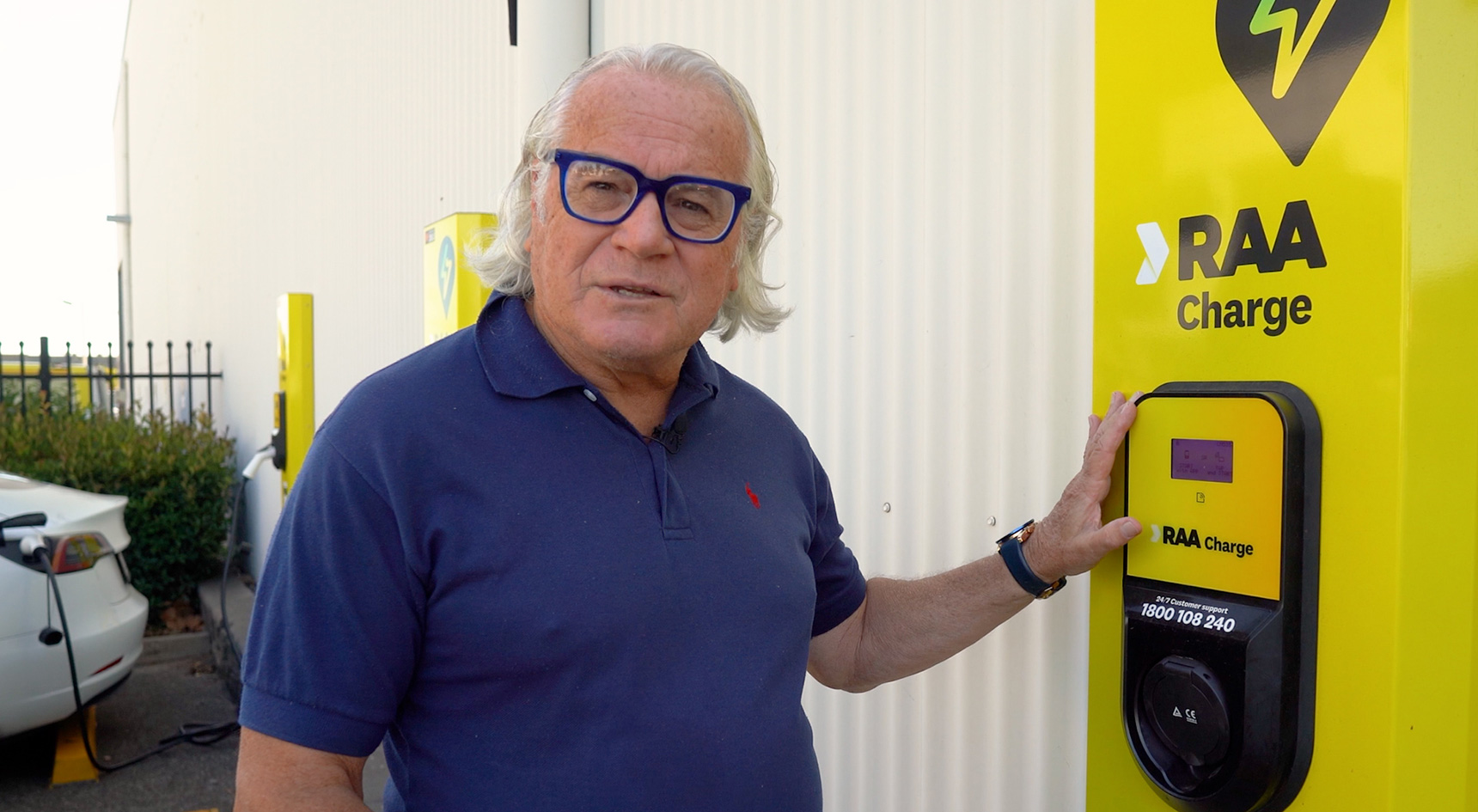By Andrew Rasch
Published: Wednesday, April 10, 2024
Speak to the average person about electric vehicle (EV) batteries and it might raise some questions. How big are they? How long do they last? Can they be recycled? Are they safe?
These are all valid questions, so we’ve called on RAA Mobility Technology Specialist Mark Borlace to help. We’ve separated fact from fiction to help you make an informed choice when buying an EV.
Watch the video below then read on to find out more.
1. What type of battery is in an EV?
Battery technology has improved significantly and is still evolving. Many EV hybrids use a nickel-metal hydride (NiMH) battery, but the lithium-ion (Li-ion) battery is the most common type in new Battery EVs (BEVs). Think of a much bigger version of the battery in your mobile phone or a modern cordless drill. Li-ion batteries are quicker to recharge, maintain power for long periods, provide consistent voltage and can cope with moderate temperature changes. There’s plenty of information online if you want to know more about the types and makeup of EV batteries.
2. Where’s the battery in an EV?
Most batteries weigh about 500kg and they’re generally the most expensive component of an EV. Batteries are usually flat and form part of the vehicle’s floor, which has a couple of advantages. Because an EV has no transmission tunnel and needs less engine room, a floor-based battery allows for more interior space and better design. Also, placing the battery in the floor structure keeps the centre of gravity low for improved handling.
3. Are EV batteries safe?
There’s much misinformation about the safety of EV batteries. Consultancy firm EV Firesafe found that while an EV battery can catch alight, it’s a minuscule risk and less likely than an internal combustion engine (ICE) vehicle fire.
With 130,000 EVs on Australian roads, there have been about seven battery fires, three of which were ignited by a separate fire and none by spontaneous combustion (another common misconception). If a Li-ion battery does catch fire, extinguishing it is challenging, although emergency services are adapting special techniques and equipment. EV manufacturers go to great lengths to make their batteries safe.
“The batteries are protected with thick metal to help avoid damage in a collision or from something striking it from below,” Mark says. “The risk of a battery fire is low and should not deter you from buying an EV.”
“The risk of a battery fire is low and should not deter you from buying an EV.”
4. How long do EV batteries take to recharge?
Not all batteries are the same and charging time depends on their type, size, technology, temperature, how much charge the battery already has, and the amount of power available from the charger.
You can charge your EV at home with a standard three-pin socket – known as trickle charging – either during the day or overnight to take advantage of off-peak electricity prices. Although it can take up to three nights for a full charge, trickle charging for just one night might give you enough juice for your daily commute. You can also install a fast EV charger at home, which is better if you drive your EV longer distances and more often.
When you’re out and about, you’ll need a public charger, but the good news is that SA has the highest number of chargers per registered EV on the mainland, thanks largely to the RAA Charge network. Some public chargers are found at caravan parks and motels and take several hours to charge your EV battery – fine if you’re staying overnight.
“If you’re on a trip, a rapid (150kW) or ultra-rapid (200kW) charger will get you back on the road in 15 to 45 minutes,” Mark says.

5. What’s the lifespan of an EV battery, and can they be recycled?
Most batteries come with eight to ten-year warranties and can be replaced, but many EVs can be expected to last twice as long as the warranty period or equivalent in number of kilometres driven – 180,000km to 200,000km.
“When a battery is down to 70 to 80 per cent of its original capacity, it’s no longer suitable for an EV but that doesn’t mean it’s done and dusted,” Mark says.
Recycling has improved considerably in recent years, and manufacturers are making strides to ensure their batteries are recyclable. More than 90 per cent of a battery’s plastics, metals and minerals can now be recycled effectively.
EV batteries can also have another life in a different purpose, such as homes and businesses, as they are up to six times larger than a house battery.